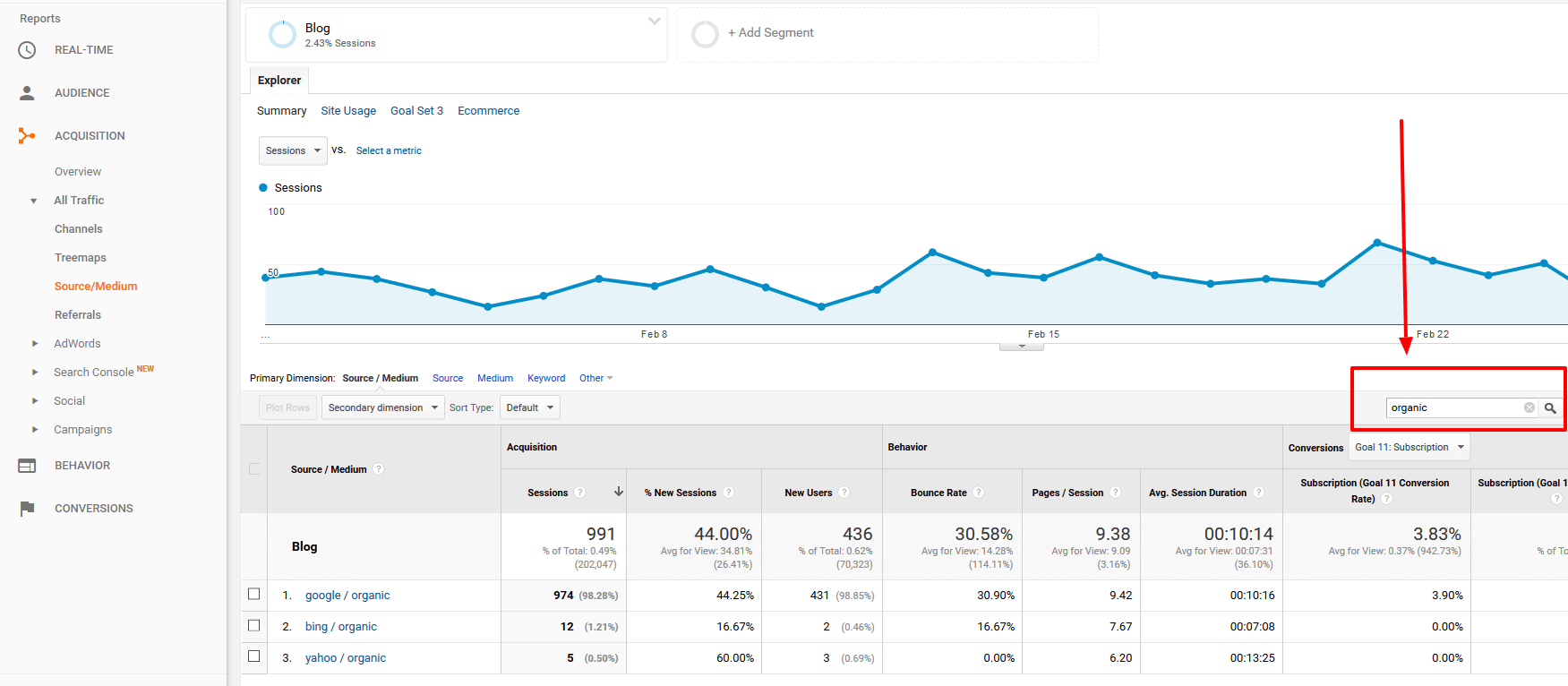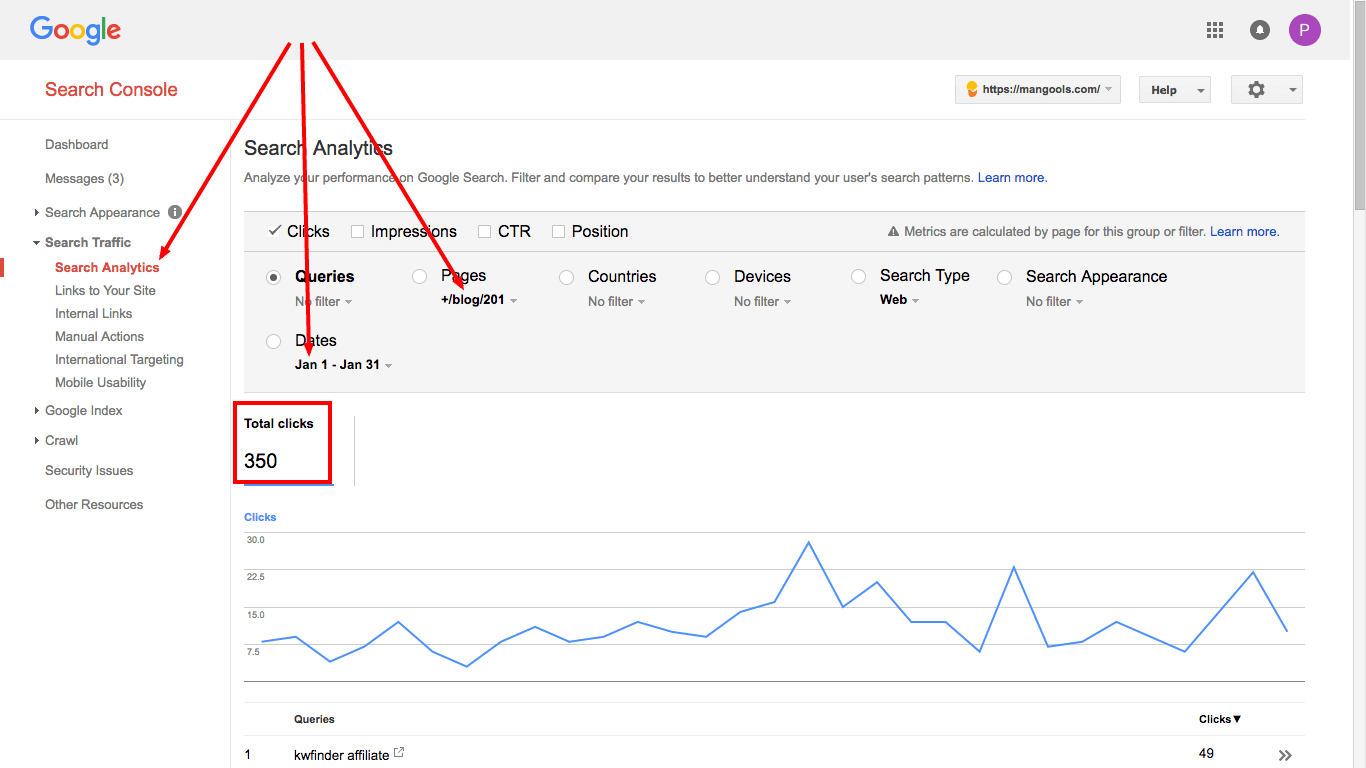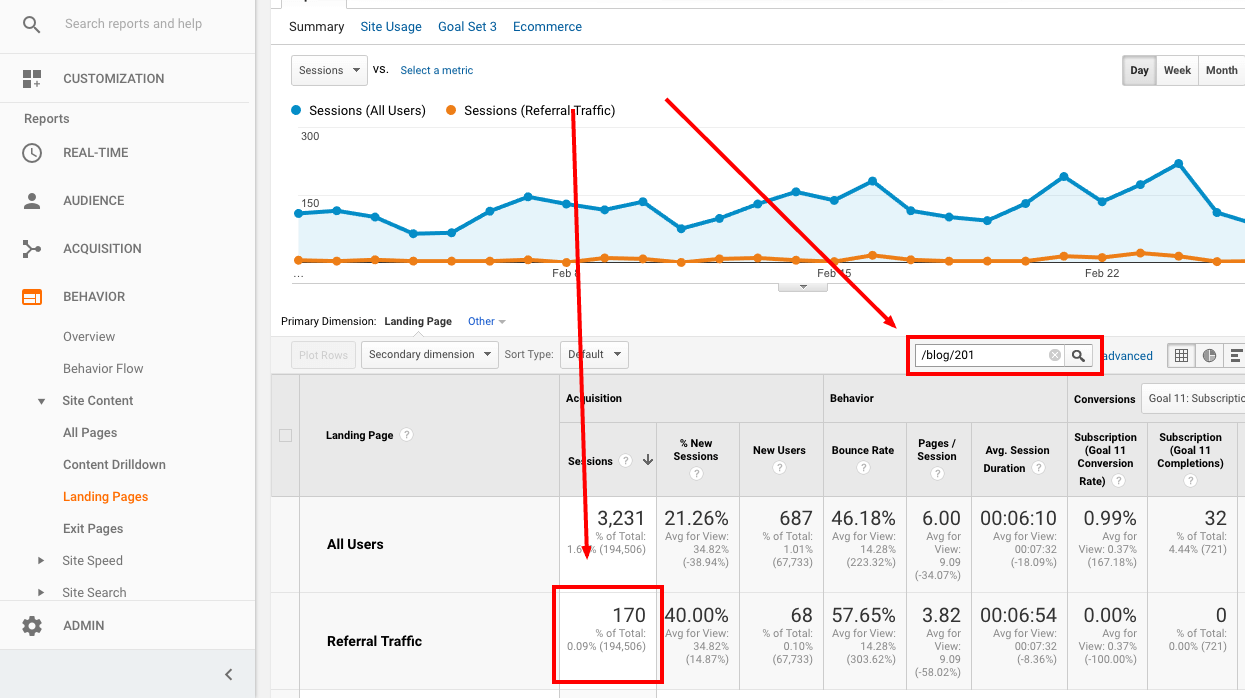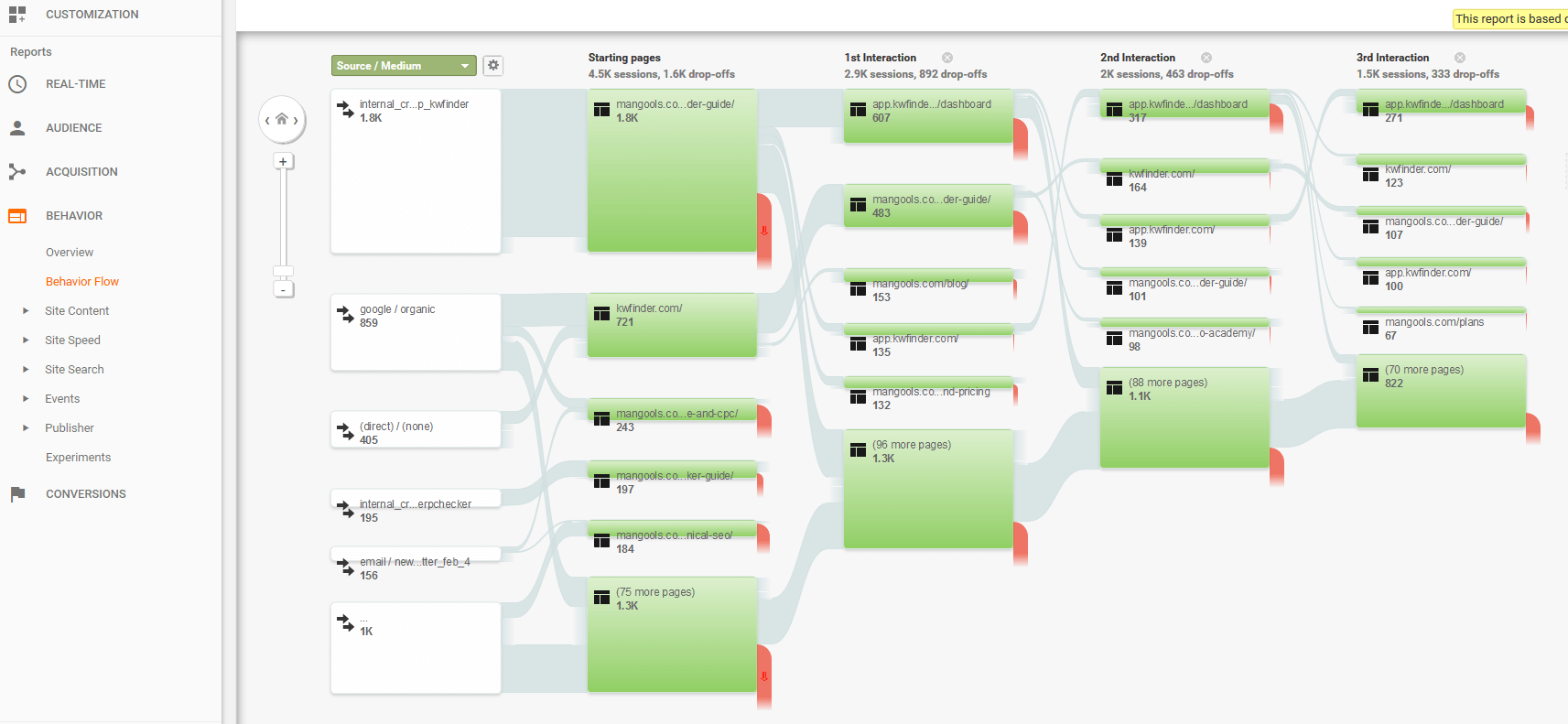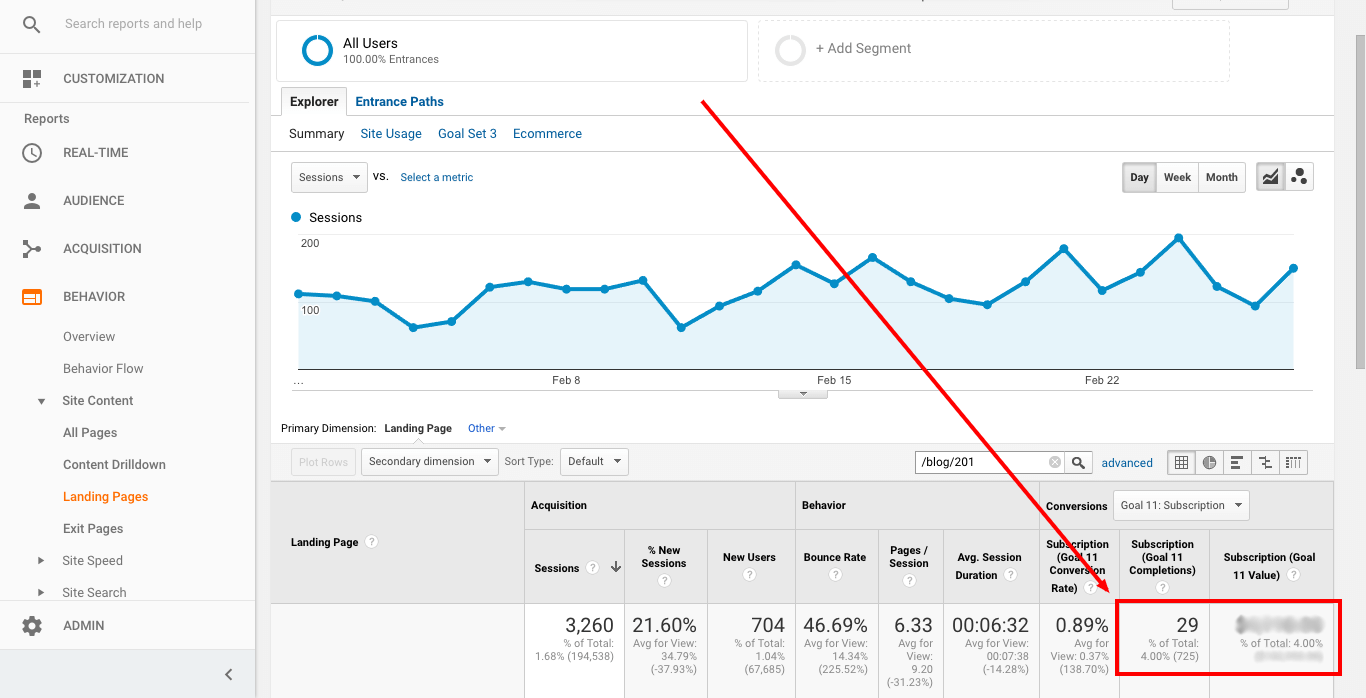Note: This article has been archived. It means it is still available, but no longer updated, so the information may be outdated.
If you’re looking for fresh SEO content, read our ultimate guide to SEO or look at our latest posts.
Is our content marketing strategy working? A question we ask ourselves at Mangools many times. There are multiple perspectives when talking about content marketing performance. This a case study of how we measure content marketing success.
First, you have to define goals, which reflect with your overall marketing and business goals. Being able to set the right goals and ending up with meaningful reports will boost your content marketing effectiveness.
Set the goals
At Mangools, we have set the following content strategy goals:
- Creating brand awareness
- Building relationships
- Generating qualified leads
Set the content marketing KPIs
In accordance with the previously mentioned goals we have set these content marketing metrics (KPIs):
- Organic traffic
- Referral traffic
- Social outreach
- Engagement
- Conversions (qualified leads)
All the goals are influenced by each other. We cannot expect conversions without any traffic. Getting traffic on your blog posts is an essential part of fulfilling any goals.
Differentiating the organic and referral traffic is one of the basics, yet extremely important. However, there’s no straightforward metric to measure the brand awareness. The number of shares, mentions or comments are great ways how to approximate it. And what about the quality of your content? It’s not only about shares and comments. Bounce rates, session durations and other Google Analytics reports help us a lot.
All in all, everything is about generating a revenue. And that is the reason, why we all measure leads and conversions.
Measuring organic traffic
To see the data in Google Analytics, we’ve created a segment called “Blog”. We track all our landing pages, apps and blog under the same Google Analytics account and tracking property, so that’s the most comfortable way to track the blog independently.
We go to “Acquisition” to see the organic traffic results and set the filter to “organic”.
Another of the most accurate ways how to measure traffic from content is in the Google Search Console. You just have to set filters properly, to get blog traffic only.
- Go to Google Search Console.
- Click on “Search Analytics”.
- Under pages switcher, click on “Filter pages”. Add that part of the URL which identifies the unique part of the blog URL (eg. /blog). We use WordPress for our blog and we publish it under “Blog” subfolder. We want to track the blog traffic only, so in our case, it’s “/blog/201” This is because we set the permalinks to “/blog/date/post-name”. You can see it in the URL of this post, as well.
- The most important number is “Total clicks”.
- We recommend tracking the results on a monthly or weekly basis to see the progress of your content marketing performance. It depends on the frequency of new posts, target audience and geographical regions.
Measuring referral traffic
The simplest way to measure content marketing referral traffic is using Google Analytics and you probably already do it. Referral traffic can be found under “Acquisition” tab.
A quality referral traffic doesn’t bounce too much. We publish many related posts in our blog, so we anticipate more visited pages per session. Likewise, we motivate users to read a few articles instead of one by putting internal links. User engagement needs to be built by various content types.
We need to add two segments for tracking: “Blog” and “Referral traffic”. Then we go to “Landing pages” under “Behavior” and set the filter to “/blog/201”. This is the way we measure the referrals of each blog post.
Measuring social outreach
These metrics show us the popularity, virality and engagement of our content. We measure the social outreach and user engagement by the number of mentions or shares on social networks. There is a great tool for this called BuzzSumo.
When looking at the number of shares, take into account your paid campaigns on social networks. The number of blog posts shares promoted on these sites can be highly affected by this activity, so it will not reflect the real organic user engagement.
Engagement
When looking at the numbers, we pay attention to user engagement metrics, mainly “Bounce rate”, “Pages per session” and “Avg. session duration”. These three give us a nice picture of the visitor’s behavior.
So what can we see behind the numbers? First of all, they indicate how people interact with your content and whether they like it or not. Moreover, poor numbers tell us that we didn’t reach the right audience. Knowing the audience is the key to success. We deeply analyse the user’s behavior in Google Analytics in the “Behavior flow” from the landing page and source perspective. On top of that, we analyze the site content and exit pages.
Measuring conversions
We all know that content marketing brings the real benefits in the long-term. You can become a thought leader, a respected authority in the field and build a large basis of followers willing to share your content. On the other hand, we need to determine whether it brings us any conversions.
It’s critical to set your conversion goals. We measure content marketing conversions as paid subscriptions to our tools and two types of leads: new users and blog subscribers. Again, we track them in Google Analytics.
In our case, we need to measure the conversions made once the blog post was a landing page. It means, we can see the number of conversions brought by each of the articles. We add our “Blog” segment, go to “Behavior”, click on “Landing pages” under “Site content” and set the filter to “/blog/201”.
Content marketing report
Alright, we have the numbers and it’s time to get a bigger picture now. To see our progress, we have prepared a special spreadsheet document, so-called “Content marketing report”.
We measure our KPIs regularly and at the end of each month, we update the report.
Measure content marketing effectively
The content marketing metrics depend on your own KPIs, so feel free to skip some of them and add other interesting numbers for your business such as engagement metrics.
How do you measure content marketing success? Let us know in the comments below.




